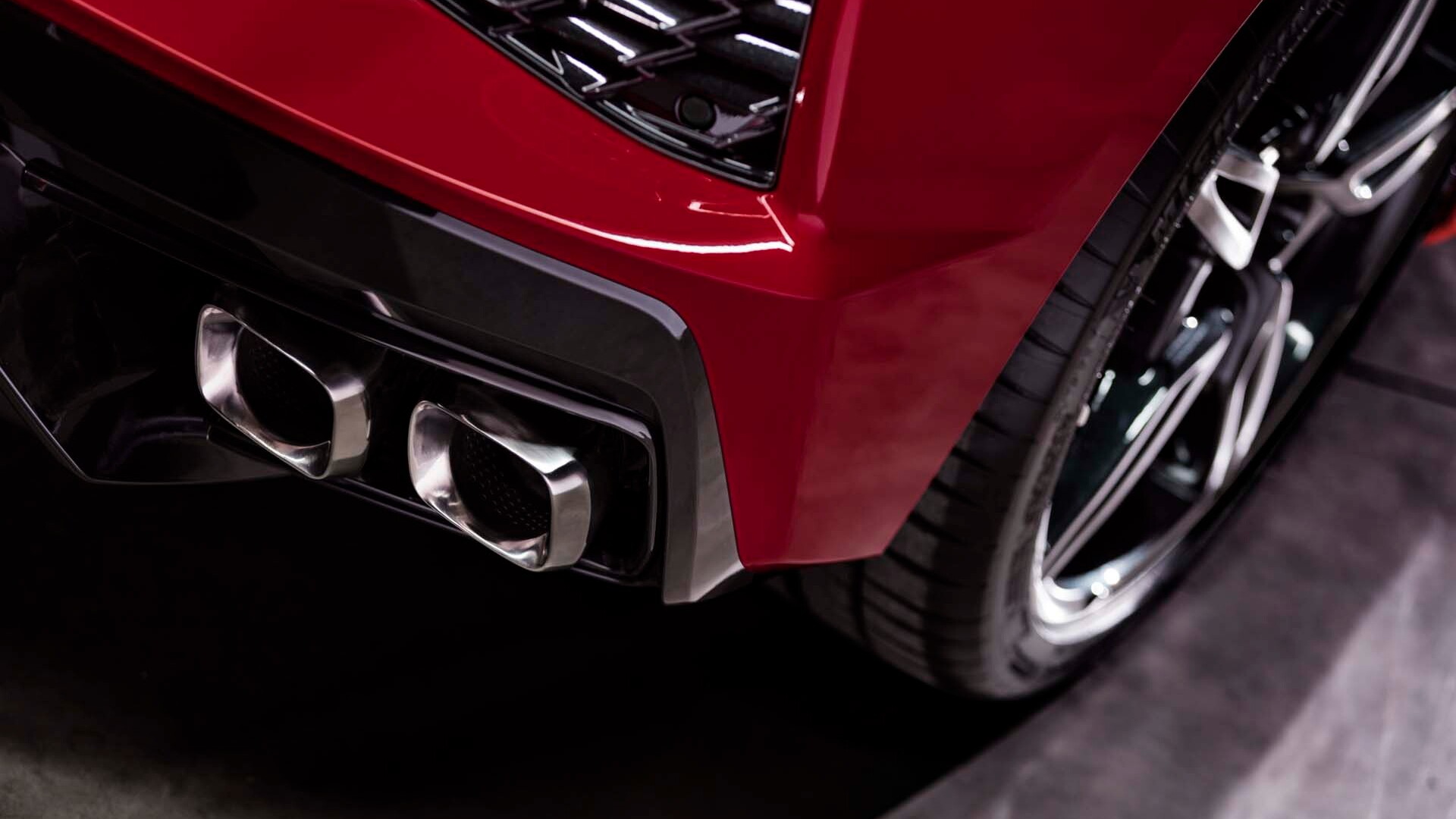The mid-engine layout of the 2020 Chevrolet Corvette provided a challenge for its engineers in many ways. Even something as simple as keeping the signature Corvette sound intact proved trickier than in the past, prompting technological intervention to ensure an ideal experience.
With a mid-engine setup, the engine sits between the cabin and the exhaust outlets. That's a lot of mass between the ear and the outlets—not to mention more physical distance. Compounding that is the presence of additional heat and sound shielding to improve cabin comfort.
"The exhaust system is as loud as it can be to meet noise regulations, but the exhaust tips are now 17 inches farther from your ears and there is a lot of heat and noise insulation in the way," GM's Chris Bonelli told Motor Authority.

2020 Chevrolet Corvette Stingray
Unfortunately, all of that very necessary material mutes several key frequencies that contribute to the exhaust note that the driver hears. To get around this, Corvette's engineers wired the Corvette's audio system to grab select frequencies from the engine to fill out the sound. The solution? As Motor1 reports, the Corvette got a little digital assistance.
"This makes the sound seem too distant at times, so we choose to enhance it for the cabin. It’s important to note, nothing coming out of the speakers would sound like an engine on its own. Some frequencies are lost, so we use audio content directly from the engine—not a recording—to supplement those frequencies," Bonelli said.
In other words, everything the driver hears inside the C8 Corvette Stingray's cabin comes from its 490-horsepower, 6.2-liter V-8 engine. The frequencies being added back in aren't from recordings or artificially synthesized; they're just being delivered via the speakers rather than the ambient sound.








